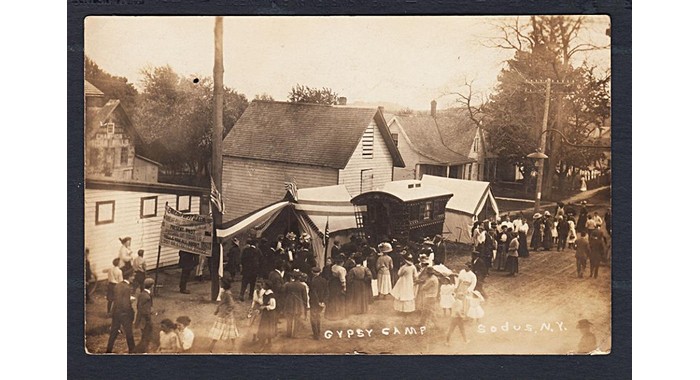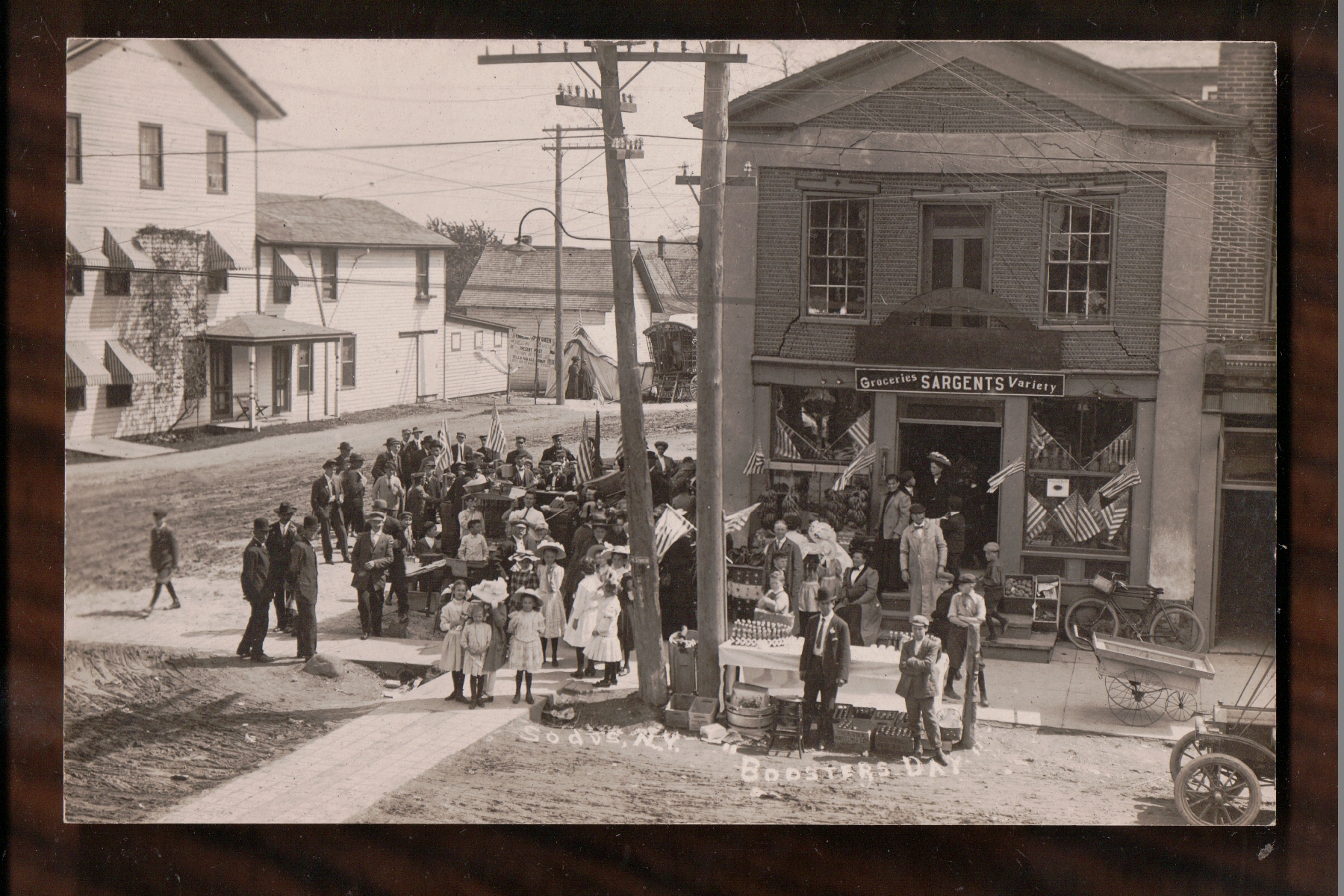
This is a 1910 post card with a picture of a gypsy camp in Sodus. It is believed to be located on Mill Street near the present fire hall. Gypsies emigrated from many parts of Europe due to harassment and discrimination. This appears to be gypsies from England based on the banner in the photo. We believe the gypsy queen’s name was Esmerelda (based on blowing up the image on the banner) and was part of the 1910 Booster Day celebration that featured Prince Nelson walking across Maple Ave on a tight rope.

Another view of the gypsy camp (upper left) from another angle. Photo courtesy of Dick Ransley.
IMMIGRATION WAVES TO THE UNITED STATES
Gypsies have come to the United States for reasons similar to those of other immigrants; however, since European powers have tended to oppose Gypsies, this hostility has hastened Gypsy emigrations. According to Sway, “Gypsy deportations from England, France, Portugal, and Spain created the genesis of Gypsy life in the New World.” Gypsies’ social marginality left them little institutional power in Europe. Sway adds that England deported some Gypsies to Barbados and Australia, and by the end of the seventeenth century, every European country with New World holdings followed the practice of deporting Gypsies to the Americas.
Suspicion between Gypsies and established institutions also spurred Gypsy emigration. Christian churches of Europe attacked Gypsy fortune-tellers, prompting deportations. Sending Gypsies home was not an option—no nation welcomed them since their origin in India was unknown to the Western world until the eighteenth century. Near the end of the nineteenth century, Eastern European emigrants spread throughout Europe and the Western Hemisphere; within this mass movement came the biggest immigrant waves of Gypsies to the United States.
Although Europeans have historically treated Gypsies poorly, Gypsies tended to fare better in Western Europe than in Eastern Europe, where they suffered the extremes of racial prejudice, including enslavement. Still, the Roma hoped to escape social oppression in the New World. Of Gypsies deported to South American colonies, some migrated North. Some Gypsies were annexed into America with territory itself: for example, Napoleon transported hundreds of Gypsy men to Louisiana during the two-year period before selling the Louisiana Territory to the United States in 1803. More recently, toward the end of the twentieth century, the collapse of Communism in Eastern Europe has enabled Gypsies to emigrate more freely, at times with renewed harassment as incentive, bringing new waves of Eastern European Gypsies to the United States.
Read more: http://www.everyculture.com/multi/Du-Ha/Gypsy-Americans.html#ixzz4Xkpzde6k
